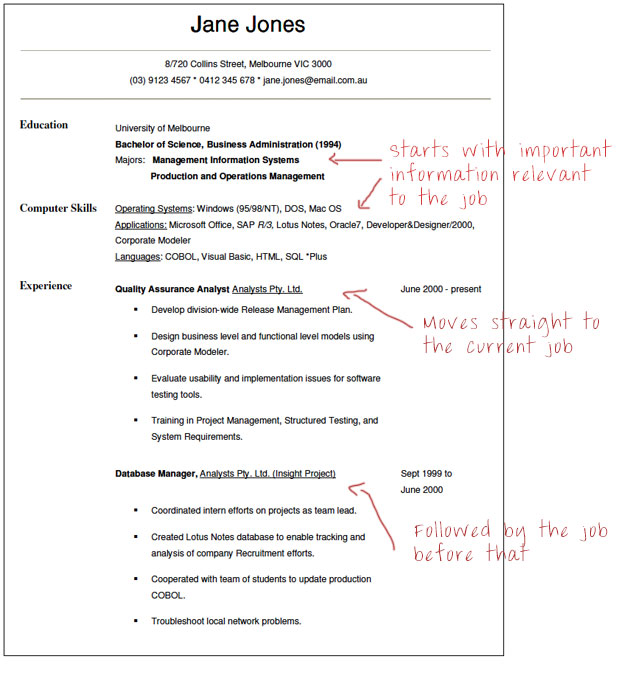Government Resumes: An Overview

Your resume is a vital document in your government job application. But, a resume for a government job is a little different to a resume you would submit for a job in the private (non-government) sector, and it has a slightly different purpose.
The aim of a resume is is to provide a reference for your claims against the selection criteria. This is your resume's primary purpose.
For example, if you talk about your employment with Company X in your statements against the selection criteria, the selection panel will use your resume to find out when you were employed at Company X, for how long, and what your actual role was. These two documents combined will win you an interview so that you have the opportunity to impress the employer in person.
Because this document is used in conjunction with your statements addressing the selection criteria, it needs to compliment your selection criteria so that these two documents together can build up a strong case for why you should get an interview. It doesn't need to contain lengthy descriptions of positions or tasks, or outline achievements in the same detail that a non-government resume would.
Government Resume Format
There are a few government resume formats, but the most common format looks like:
- Personal details
- Summary / key qualifications
- Employment history (including role responsibilities and key achievements)
- Education / courses
- Referee details
It needs to be succinct and tailored not only to the job you are applying for, but also to the selection criteria.
When selection panels also have to plough through cover letters and lengthy statements addressing selection criteria, any conflicts in information or areas that don't make sense across all three of these documents will lead to confusion. As a government job applicant, confusion is your enemy! The easier you make your application to understand and the more prominent your key strengths and claims for the position are, the better your application will fare.
To do this, you should repeat key points in from your selection criteria within your resume (for example, in the role responsibilities or key achievements section) and use the language and keywords from the job description within your resume (the same way you would within your selection criteria statements).
The most common format for a government resume is a 'chronological resume':
Government Resume Templates
Templates can be a great way to ensure you are covering the
information that should be included in your resume. Our government
resume templates also include a cover
letter template and selection
criteria template to make sure your entire government job
application is consistent in look and feel.
The Difference Between a Resume and a CV
A resume is a basic explanation of your employment history, core skills, major achievements and any educational qualifications.
A CV (or curriculum vitae) is a more in depth explanation that covers your employment history in more depth, will delve into core skills and major achievements, and also outlines published works, research projects, grants, speaking engagements, and more detailed information about your educational history. CVs are traditionally used when applying for positions in research / scientific organisations or academic settings.
Unless you are applying for a research, scientific or academic position, you are better off using a basic resume for your government job application.
Top 5 Government Resume Tips
-
Edit your resume every time you apply for a new job. Even better, you should re-write it entirely. This includes tailoring your, knowledge, skills, abilities and achievements for the kind of position you are applying for.
-
Resumes for government jobs should be about three pages long - shorter if you don’t have enough work experience. Don’t pad it out. Longer if you have considerable relevant work experience, however try not to go beyond four pages. A lengthy resume will work against you.
-
Don't use graphics and fancy borders unless your application is for a job in a creative industry, such as website design, graphic art or photography. Cluttered resumes are more difficult to read and understand. Clean and clear with lots of white space is the way to go.
-
Should you include a photo on your resume? If you work in a highly specialised field or small industry and you want someone on the selection panel to recognise you, including a photo can be a good idea. Otherwise, it is best to avoid putting your photo on your resume.
-
Don’t use jargon or assume that the person reading your resume understands your industry. Spell out acronyms and explain industry specific terms. Always assume that there might be an independent panel member on the selection board that is not from your industry (it happens frequently and if they can't understand your experience they can't assess you properly!)
- Read
more government resume tips here...